Gulls
Gulls come to the Lake in the summer. The most commonly seen species are the Ring-billed Gull (which changes its appearance as it ages) and the Herring Gull. Indeed, these are two of the most common gulls across North America. Now and then, one also sees the California Gull.
Seagull? No, the name is gull; it is not seagull.
Local gulls are omnivorous: they will eat worms, insects, fish, grain, rodents, carrion, and refuse. Juvenile gulls have the same body shape as adults, but sport a much darker, patterned plumage.
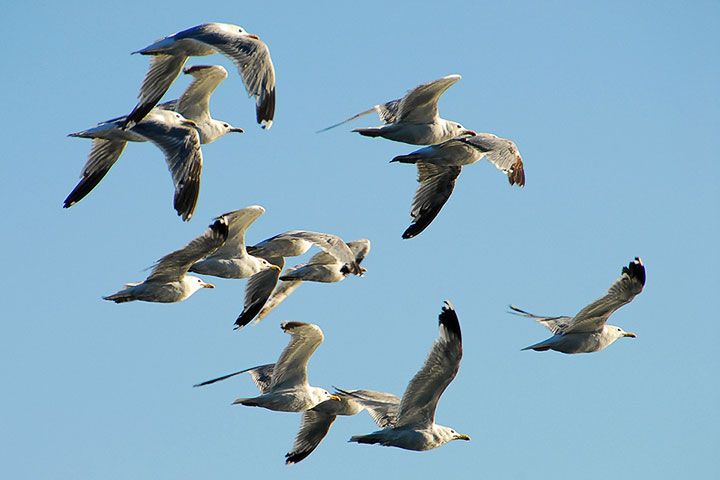 A flock of California Gulls migrating along the West Arm. A few hundred of them flew west along the Arm one July evening in groups of up to a few dozen.
A flock of California Gulls migrating along the West Arm. A few hundred of them flew west along the Arm one July evening in groups of up to a few dozen.
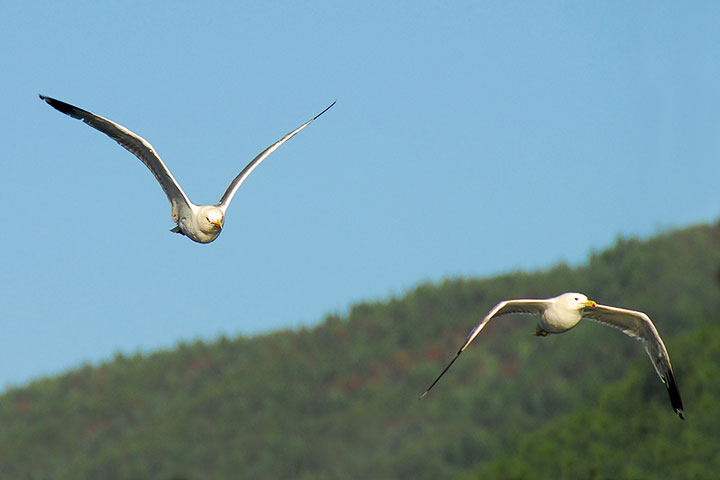 A pair of California Gulls. While California Gulls look rather like Herring Gulls, they have longer wings and dark eyes.
A pair of California Gulls. While California Gulls look rather like Herring Gulls, they have longer wings and dark eyes.
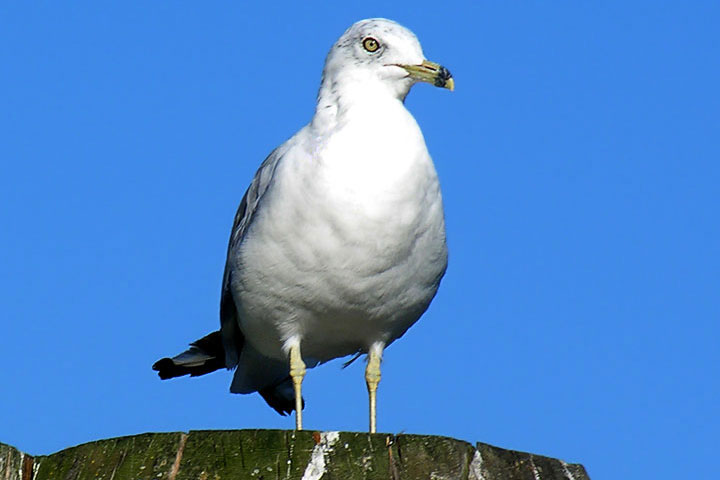 The Ring-Billed Gull is identified by the black ring near the end of an otherwise yellow bill.
The Ring-Billed Gull is identified by the black ring near the end of an otherwise yellow bill.
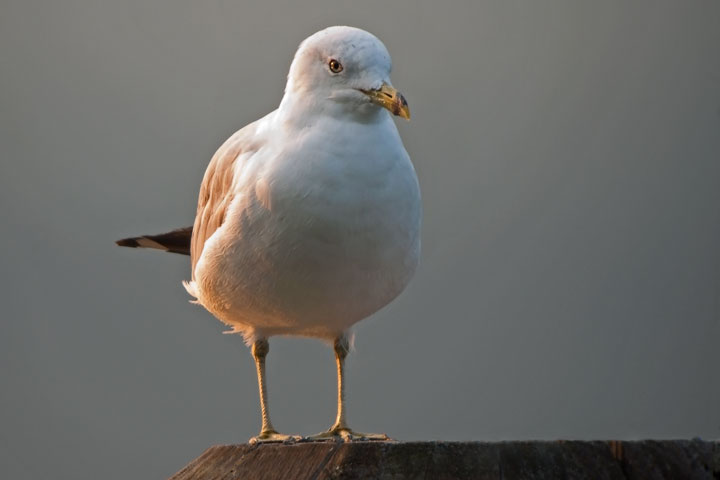 A Ring–billed Gull in the early morning light.
A Ring–billed Gull in the early morning light.
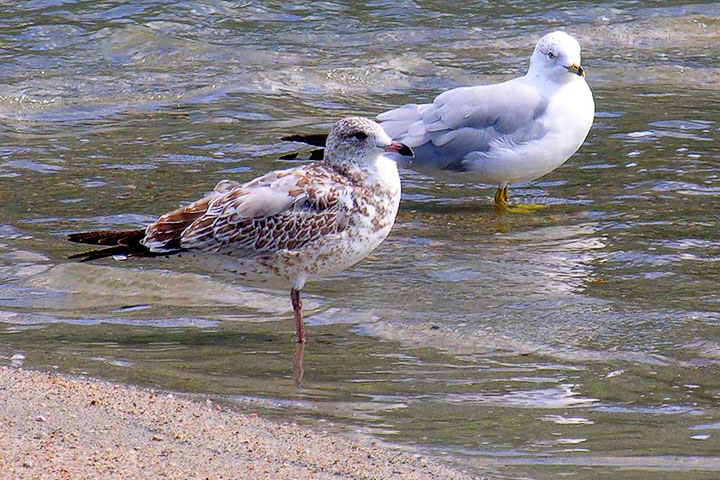 Adult Ring-billed Gull and yearling (forground). The ring-billed gull changes its appearance as it ages. Chicks have two color phases; some are smoky gray, while others are buff with dark spots. Yearlings have a black tipped bill (not a ring), are whitish with brown flecks and have very dark wing tips and tails.
Adult Ring-billed Gull and yearling (forground). The ring-billed gull changes its appearance as it ages. Chicks have two color phases; some are smoky gray, while others are buff with dark spots. Yearlings have a black tipped bill (not a ring), are whitish with brown flecks and have very dark wing tips and tails.
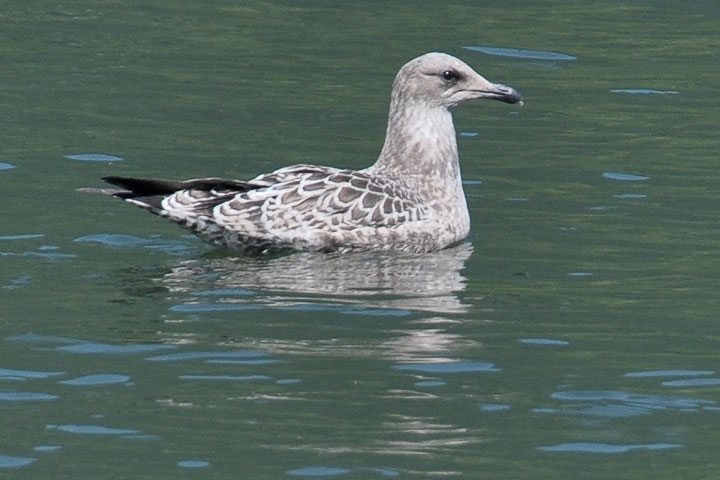 The species of this juvenile is unclear, but it may be a first–summer Herring Gull.
The species of this juvenile is unclear, but it may be a first–summer Herring Gull.
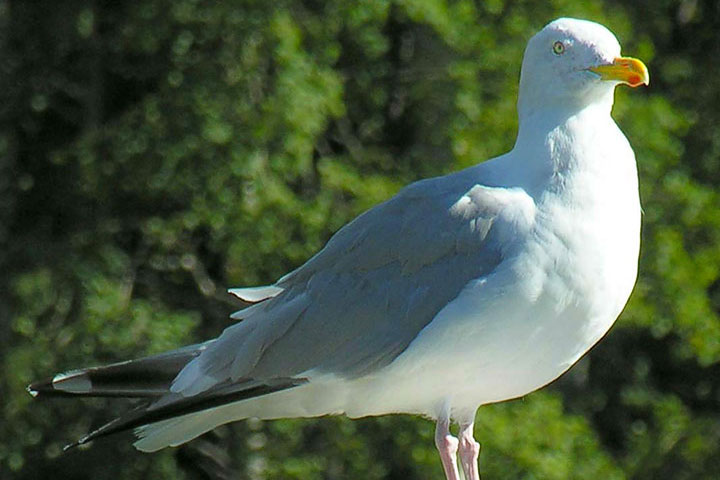 Herring Gull has a yellow bill with a red spot on its lower mandible.
Herring Gull has a yellow bill with a red spot on its lower mandible.
Information from Wikipedia: Gulls.
![]()